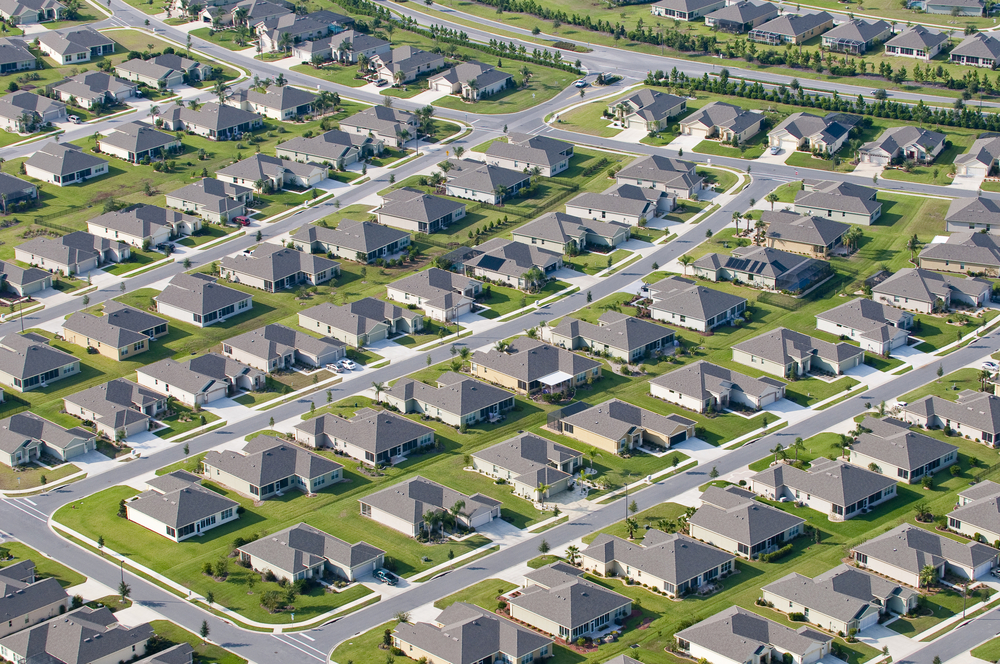For my upcycle aesthetic I am embody the vibrant culture of New Orleans and the rural do it yourself aesthetic of the Louisiana bayou. I want to make my project include the vibrant styles of New Orleans by including beautiful symbols such as the Fleur de Lis on my guitar body, and embellishing the homemade aspect to bring forth the do it yourself vibe that constructs and things have in the bayou.

For the opposite of my upcycle aesthetic I had to think about what opposes this vibrant and unique culture as a whole. What lacks uniqueness and a homemade attitude, that does not include nature or vibrancy? The one thing I could think of was suburbia. Suburbia is designed for every building to be the same, with nothing that stands out or invites attention. While the colorful combination of cultures that make up New Orleans create uniqueness and joy in the people that see, suburbia creates monotony and adequacy.

The suburb environment was created due to the post war economic boom that occurred after World War II. Returning veterans were granted low interest home loans due to the G.I. bill, and the new interstate highway system allowed many urban environments to spread out and create “suburban” locations. This increase in home ownership and the creation of suburbs helped to increase this economic boom in the post war period. The first suburb is credited to Levittown in New York. William Levitt built Levittown by purchasing mass amounts of land, creating subdivisions in the lots, and had crews builds countless homes for a reduced rate. He was then able to sell these homes to veterans and their families at reduced rates, and there was a mass migration from urban cities to the suburbs.

The percentage of people in America that lived in suburbs nearly double, increasing from 19.5% to 30.7% in a span of 20 years, and planned suburban communities increased by 126.1% from 1940 to 1950. These suburban environments increased the economy, and made other industries boom, such as many appliance and automobile companies, increasing the amount of car owners by almost 25% in about 10 years.
The suburbs lack uniqueness that make them an aesthetic I am not very much a fan of. I used to live in a small suburban neighborhood when I was a kid until I moved to a different neighborhood where every house is unique, and was so much happier with it. Many suburbs are built out of a selection of houses, where a few models are repeated over potentially hundreds of houses. These are referred to as “cookie cutters” and are extremely easy for developers to build. Suburbs also remove any natural features from the environment around them, where the most nature found is the mowed lawn in front. I believe that this environment is the opposite of the unique and interesting culture of the Louisiana bayou and New Orleans.
https://www.istockphoto.com/photo/shack-on-the-bayou-gm182411154-11714374
https://grist.org/cities/starving-the-cities-to-feed-the-suburbs/


8 Comments. Leave new
Hi Garret, super interesting post. I never considered suburbia an aesthetic before but it totally is. I love the way you compared this and your aesthetic. there are so many ways to perceive aesthetics and this post really opened my eyes to that.
Thanks for the comment Adlai! I agree in thinking it is interesting to consider surburbia as an aesthetic because of its certain “blandness”. I thought it was definitely the opposite of my aesthetic.
Garrett, this article was purely phenomenal! I am shocked from the origins of the classic “cookie cutter” aesthetic. Living in Colorado you often find yourself lost and often confused within these cities that all look identical. Garrett, how would your guitar change if you were to apply this suburbia effect on it? I am sure the cigar box would be something more like a cardboard box! I think the Bayou is a perfect aesthetic for your project, good luck.
Thank you for the comment Alex! I completely agree that surburbia wouldn’t work as an aesthetic for my project. I think it would be something like a cardboard box!
Hey Garrett, this was a super interesting read! I loved that you included so much about the statistics and history of suburbia!
Thank you for the comment Alexander!
Your post reminded me of a Vox video, “Why so many suburbs look the same,” that goes in-depth about why there was an uptake in suburbs. Essentially, one government agency made it more enticing for developers to construct suburbs while making other layouts risky. Moving on, I’m curious if you were aware of any instances of a blend of the two: something vibrant and unique despite being ‘cookie-cutter.’
Thanks for the comment Vincent! I should check out that Vox video, sounds like an interesting watch.